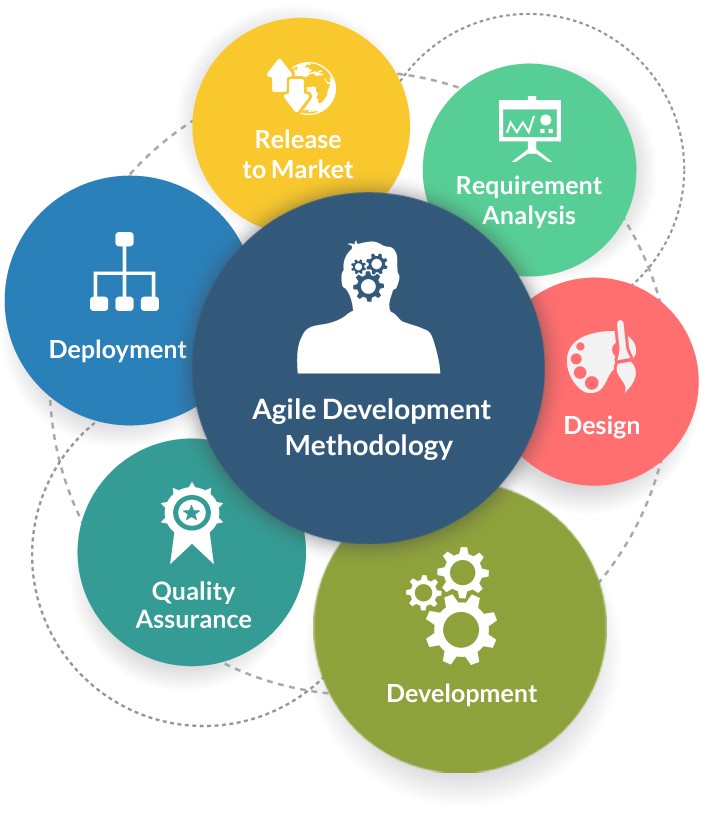You might have heard of the proverb “There is more than one way to cook an egg”. Similarly, there is more than one way to develop a software project. If you search for various approaches to build software, you will find a very long list of methodologies through which you can accomplish tasks. Some of the approaches are Rapid Application Development (RAD), Spiral, waterfall method etc.
The basic aim of software development
The basic aim of software development process is to develop a quality app and making the client successful. Big companies like Google, Yahoo are centered on this idea. To achieve this, they tend to depend on the software development approaches. It does not matter which approach you prefer but the ultimate aim is the successful launch of the app. Each approach has some pros and cons which are discussed in detail.
The aim should be about aligning our approach according to the needs and requirements of the customers to improve project’s productivity, efficiency and satisfaction. We believe this is possible only through a continuous work with the clients, understanding their needs and implementing them in a business model to achieve astounding results. That is why the clients appreciate that we work on their common issues generating a huge amount of return on investments.
Proper Documentation
We believe in making proper documentation of the client’s project detailing everything about the goals, needs, requirements and the milestones of the project. User’s feedback and reviews must be taken into account so that we can improve the issues in the next versions of the app.
These are challenging times so one should be quick about the changes in the technologies and approaches for developing a successful product. There are various approaches, each have its pros and cons. By carefully observing all the factors, one should select an approach for the software development.
Agile software development approach
Agile method is basically breaking up the entire project into smaller easily developable features which are developed through increment cycles known as sprints. Designing, coding, testing and quality acceptance is done by the team members of each sprint. At the end of the sprint, a working module is developed which is presented to the owner for verification.
After the verification, it is presented to stakeholders for further improvement requests and this entire process is iterated through sprints until all constituent features are developed. The basic principle is that small modules are developed and iterated to improve and add features.
Crystal Methods
Crystal Method follows agile software development process but it focuses on people and their interactions when working on a project rather than on processes and tools. Some companies believe that people’s skill, their talents and how they communicate with the team has the biggest impact on the outcome of project.
Crystal methods are based on two big assumptions. First one is that each project is exclusive and vibrant so each project requires different specific methods. Second one is that the team can modularise their work and become a more optimised team.
Project Development should be viewed as a game which stimulates everyone to interact, become productive and offer exceptional ideas. To motto should not be “is our modal accurate” but instead it should be asking questions like “Is our product aims at meeting client’s needs?”
Dynamic Systems Development Method (DSDM)
DSDM also follows agile software development process. It is incremental and iterative approach that is based on Rapid Application Development (RAD). It consists of four phases-feasibility study, functional iteration, build iteration and implementation.
Spiral Model
Spiral model is based on the incremental modal in which more emphasis is given on risk analysis. There are four phases in spiral model namely Planning, Analysis, Engineering and Evaluation.
A software project passes through all the above phases repeating through iterations (known as spirals in model). The spiral starts in the planning phase, requirements about the project is gathered, the project is developed and then lastly the quality of the product is evaluated.
Rapid Application Development (RAD) Method
Rapid Application development method is a fall out of the failure of waterfall model. Rapid application development methods emphasise on rapid prototyping and iterative delivery and it is based on the sequential design practices. It involves planning requirements, user design, rapid construction and cut over.
In the initial stages, developers and designers come to a mutual agreement on project scope and requirements. Then the user feedback is gathered and heavy emphasis is given on determining the system architecture. Once the designing part is complete, construction phase starts which involves coding, testing and integration. Finally the cut over stage allows the developers to make the project live.
Waterfall Method
Waterfall method is the most basic software development method which has lost its shine in today’s world as it has failed in delivering quality products within the deadline. In waterfall model, each phase must complete before the starting of next phase. It has been replaced by other methods described above.
The different phases of the waterfall model are Requirement analysis and Gathering, System design, Implementation, Testing, Deployment of System and Maintenance.
As we can see, there are numerous methods available to develop software. So which is the best method? The truth is no method is the best; it all depends on the client’s project requirements. According to the client’s need, a method is chosen which will help the developer to produce quality products in a timely manner.



It’s rare for me to find something on the web that’s as entertaining and intriguing as what you have got here. Your page is sweet, your graphics are great, and what’s more, you use source that are relevant to what you’re saying. You are certainly one in a million, well done!